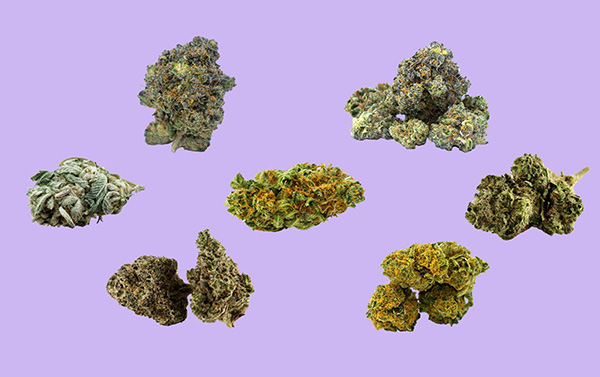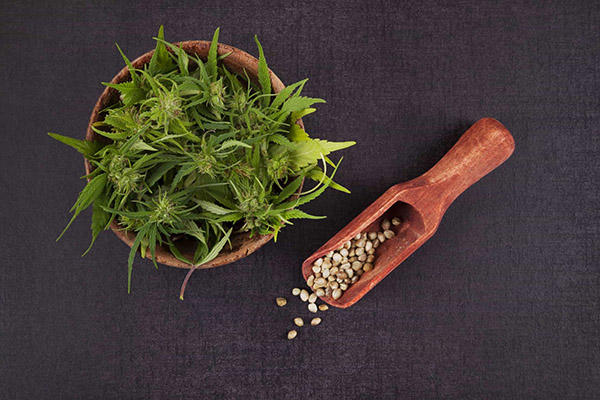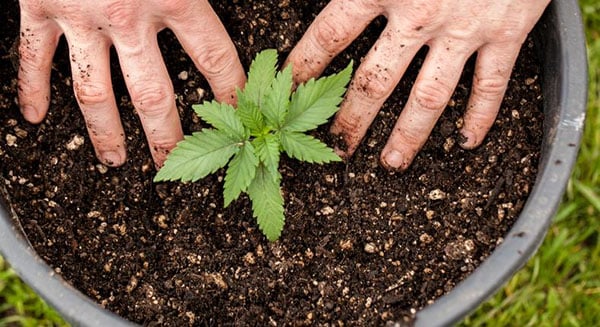How Do We Get New Weed Strains?

How Do We Get New Weed Strains?

Dozens of new strains of cannabis are created each year, each combining the taste, aroma, and other attributes of two or more strains into a new strain of cannabis. Tastes and trends are changing all the time, and cannabis breeders are constantly creating new strains to serve the interests of cannabis consumers.
Cannabis is one of the most cultivated plants, and there is evidence pointing to over 500 years of cultivation. Growers can control the breeding and growing process to select and improve plants to meet a variety of needs.
To explain how new strains of weeds are created, we need to start with plant reproduction.
Weed breeding 101

Cannabis plants can be female or male -- a trait called dioecious that is rare in the plant world.
Only female cannabis plants grow the buds we all know and love. Whenever you see cannabis plants with buds, those are female.
Male plants grow pollen sacs, while female weed plants grow seeds.
When males reach maturity, their pollen sacs open and release pollen into the air, which lands on and pollinates nearby female plants.
When the pollinating female matures, it grows seeds with buds that carry genes from both the female and the pollinating male. When a pollinated female plant matures, it will put its effort into producing seeds rather than buds. These seeds will then fall to the ground or can be harvested and grown into a new strain of plant.
How to breed hybrid weeds

Breeding can be done artificially and intentionally in commercial, or homegrown environments. First, cannabis breeders will select two strains to combine based on characteristics such as taste, aroma, potency, effectiveness, yield, ease of cultivation, and other factors. They would choose females of one strain and males of another.
Weed breeders typically place one male plant and multiple female plants in an enclosed room. This helps contain the pollen and ensure successful pollination.
Pollination can also be done outdoors by growing the plants next to each other.
Once the female has pollinated and reached maturity, the seeds can be harvested.
These seeds will be used to create new plants that will contain genes from both female and male plants, known as hybrids.
What is a phenotype?
Simply put, the new seeds on the female plant are called phenotypes-they are like the children of two parent plants. A single pollinated female plant will produce dozens of seeds or phenotypes.
Two things affect the structure of a cannabis plant: genetics and environment. A plant's genetic makeup -- also known as genotype -- acts as a blueprint for growth. It allows for a range of physical possibilities. But genes can turn their expression on and off based on environmental cues.
The interaction between a plant's genotype or blueprint and its environment affects its phenotype. This is the physical expression of its genetic code. The observable characteristics of cannabis plants, such as shape, smell, color, and resin production, are all influenced by the environment.
Let us give a comparison using dogs as an example.
If a Labrador and a Poodle mate and produce a litter of puppies, they will be Labradoodle puppies.
They will have characteristics of both mother and father. Some puppies will look more like poodles (maybe they'll be taller and thinner with more curly hair), some more like Labradors (may have straight hair and be shorter in stature), but they will all be a mix of the different attributes from each parent.
The same is true when strains get crossbred.
For example, breeding Lemon Skunk and Super Silver Haze will give you the seeds of Super Lemon Haze.
All the resulting Super Lemon Haze seeds will be different as they grow into plants: some will be smelly and tall and thin like lemon skunks, some will be short and like Super Silver Haze, will have more trichomes, and others will have a more equal mix of traits from both parent strains.
Just as a litter of Labradoodle will produce puppies that exhibit different characteristics of their two parents, so hemp seeds or phenotypes will exhibit different characteristics according to the strains of their parents.
These traits can include size and structure,
(Short, tall, thin, dense), color (light green, dark green, purple, orange), smell (fruity, smelly, sweet), effect (energetic, calming, cerebral, giggling), and so on.
All the traits have been derived from the parent strain, and each phenotype will be a unique combination of those inherited traits.
What is phenol capture?
When creating new strains of cannabis, breeders often pollinate multiple female plants. The result is dozens, if not hundreds, of seeds. Each of these seeds is a different phenotype. So which phenotype ends up on the shelf of your local dispensary?
Cannabis breeders work to develop new strains of seeds into plants and select the best ones to put on the market - something called "pheno-hunting." Breeders are looking for the best combination of traits in the plants.
Some phenotypes may smell good but not look good; Some may taste and look good but not have much potency; Some may be low yielding or susceptible to blite; And so on. Breeders want to find specific phenotypes that combine all the best traits of the new strain.
Pheno-hunting usually takes generations to pick out the best version of a strain. For example, a breeder might first plant ten seeds and then select the best five; Then those five are grown again and reduced to three; They are then grown, and then the final phenotype is determined from those. It can take months for each generation to grow, so finding and breeding new strains often takes months or even years.
Once breeders have selected the phenotype with the best traits, they churn it out, and that version of the new strain will hit the market and eventually appear on shelves.
Bring other phenotypes to market
Sometimes a strain will become very popular, and this will encourage breeders
to take advantage of this popularity to sell a different version of the strain. They will do this by growing new phenotypes of that strain and selecting ones that complement the original. Such as more potency or a mellower high etc.
This is why you will see two versions of the same strain. One version will usually have a number after it.
An example of this could be Bruce Banner and Bruce Banner #3 or Northern Lights and Northern Lights #5. The strain with the number after it is just to differentiate the different phenotypes.
They share the same parent strain and are similar. However, they have a unique combination of traits they inherit from the parent strains.





